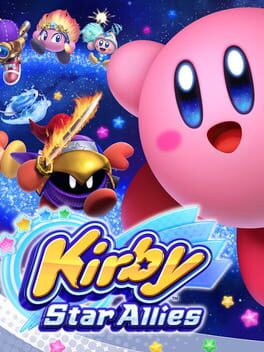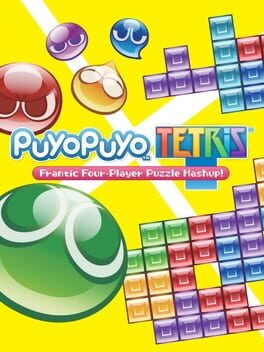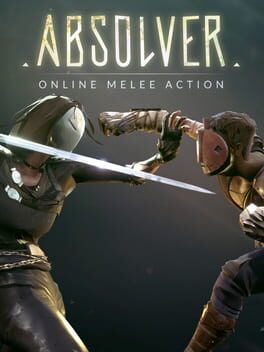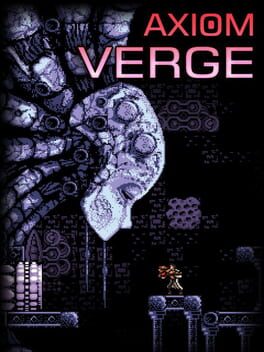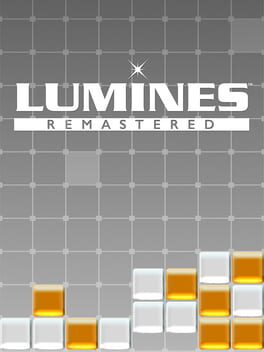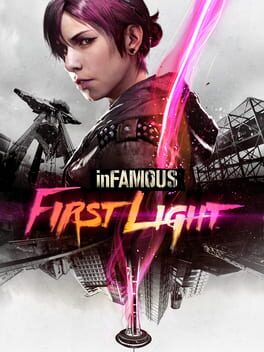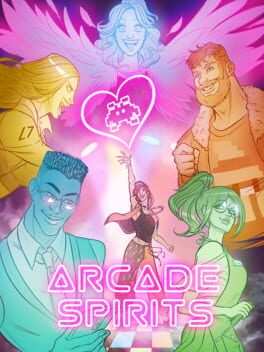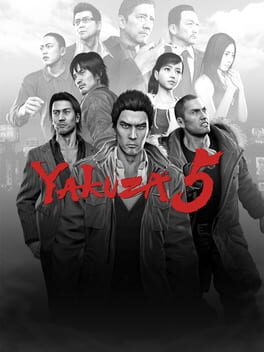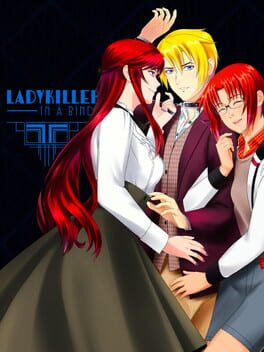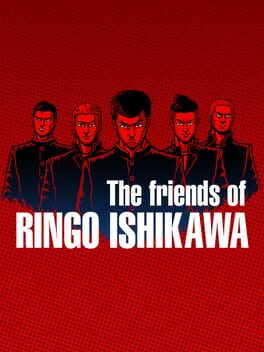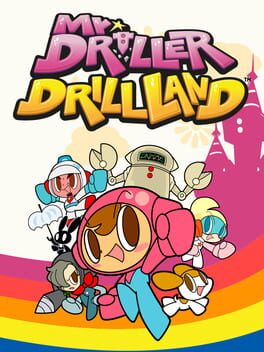done
2015
Lara Croft Go takes what was good about the formula of turn-based action from Hitman Go and adds more action and adventure. The puzzle format translates well to climbing – in fact, I think that the deathtraps and careful movement required in LCG make its climbing more interesting than in a lot of the mainline series. That’s some of the magic of the Go games: by turning everything into a puzzle component, overall gameplay design becomes more thoughtful and inspired. Creativity under constraint. Now, if only fewer puzzles seemed to rely so much on the reset button, or if there were multiple solutions available to some puzzles. Then the Go series would really be cooking with gas.
2018
This game must be maximally cute at all times. It often seems like a greatest-hits remaster of Kirby’s Adventure and Kirby 64, which means that it’s easy to play, has excellent music (here orchestrated with lead voices of violin and piano), and absurd cosmic boss battles. The final boss, in particular, shows great creativity. I just wish some of its puzzles required a little more thought in how to combine powers and, of course, that there was more of it.
2014
A good mix of two great games, with some fun original modes and an emphasis on chains and t-spins. Some of the anime style gets in the way of it being a total smash, and some of the mixed modes could also be a little better. The online scene is dedicated, but it’s hard to get connected a match. As far as the multiplayer scene goes, this is another one that definitely needs crossplay. It’s too niche a game to have much of a playerbase, otherwise.
2020
2017
Absolver’s focus is on strategic hand-to-hand combat, and in that regard this is a very successful game. But it is also a limited game, with almost nothing in the way of music, dialog, characters, or narrative. I enjoyed how it looked – there was a lot more variety in lighting and design than I initially expected – and it works as a showcase for its combat system. As a game from a small developer, it’s impressive that Absolver has the PvE, PvP, and co-op that it does. I just wish there had been a little more to it.
2015
Axiom Verge doesn’t do much to differentiate itself from being a straight-up Metroid homage, but that just means its a solid game. The soundtrack is thumping, some of the pixel art is good (especially for backgrounds and on larger scales), and the requisite interaction between items and the map is interesting enough. Enemy variety and behavior is a bit lacking. For all the weapons to be found, few are particularly effective. That’s also down to everything being a bit of a bullet sponge.
Come to think of it, that sponginess and the problem of having interesting bit ineffective weapons are linked together. If it didn’t take so many shots to down everything, maybe I would have been able to experiment with more of the inventory. Alternately, enemies could have different kinds of armor and types that would require the player to experiment. Here’s hoping for more thoughtful enemy design in the sequel.
Come to think of it, that sponginess and the problem of having interesting bit ineffective weapons are linked together. If it didn’t take so many shots to down everything, maybe I would have been able to experiment with more of the inventory. Alternately, enemies could have different kinds of armor and types that would require the player to experiment. Here’s hoping for more thoughtful enemy design in the sequel.
For what serves as an introduction to an episodic game made on a shoestring budget, NALE could be worse, but it doesn’t have much going for it, either. The characters are thin, the courtroom gameplay is a Phoenix Wright knockoff, and the case presented in this episode involves a jealous ex-girlfriend who frames her erstwhile friend, who is now dating her clueless ex-boyfriend, for arson. This is not played seriously at all within the courtroom scene. However, there is one moment afterwards in which the titular Nina reveals her worry about how close the case went to sending an innocent person to prison for a serious crime on a false accusation.
The humor is one-note and aimed at an imagined nerdy audience, but there aren’t jokes as much as attempts at references or tropes that fall flat. The epilogue, which puts the defense lawyer heroine and her mentor in bunny and cat costumes to pitch the next episode, is cringe-inducing fan service. Maybe this turned into more on full release, but I doubt that I will find out.
The humor is one-note and aimed at an imagined nerdy audience, but there aren’t jokes as much as attempts at references or tropes that fall flat. The epilogue, which puts the defense lawyer heroine and her mentor in bunny and cat costumes to pitch the next episode, is cringe-inducing fan service. Maybe this turned into more on full release, but I doubt that I will find out.
2018
Miziguchi sure knows how to put together an hour of relaxing gameplay that stretches the player into taking different approaches, track by track, skin by skin. I realized in completing the remaster that there were some tunes that I hadn’t heard (at least while playing) in years. Lumines is, if anything, an underrated puzzle game that stands on its own in terms of originality. It’s also interesting to play through it after Tetris Effect and to see which ideas Miziguchi decided to keep and which he’s moved past.
Out of the Infamous games, Fetch is the most fun protag. It’s good that in her spinoff she’s overpowered from the start. That avoids the some of the boredom of Infamous 2 and Second Son. But as with the other games in the series, Sucker Punch attempts to handle some social issues (homelessness and drug abuse in this case) and mostly falls flat. And I can’t imagine who requested the survival arenas or more of the collect-a-thon. Plus, there’s not even the usual semblance of choice. Fetch disintegrates her villain and gets revenge, and the game makes you press buttons to do it, but there’s no ‘mercy’ option. I guess SP had to set up a single canon ending to lead into the start of Second Son, but I can’t see why that requires Fetch to become a murderer. Just put in an alternate ending and say it’s not canon, and that problem is solved.
At least the laser pew pew is fun. The goon blasting and freerunning are really enjoyable in First Light, easily being the best of the series. Tearing around parts of Seattle as Fetch is definitely enough to hang a few hours of enjoyment on, and then you’re out. First Light doesn’t wear out its welcome, and it’s the better game because of it.
At least the laser pew pew is fun. The goon blasting and freerunning are really enjoyable in First Light, easily being the best of the series. Tearing around parts of Seattle as Fetch is definitely enough to hang a few hours of enjoyment on, and then you’re out. First Light doesn’t wear out its welcome, and it’s the better game because of it.
2019
An excellent VN from start to finish, Arcade Spirits isn’t afraid of conflict, hardship, and repeatedly confronting the MC with their own self-doubts. As a wonderfully queer game that emphasizes self-expression, the choices presented nonetheless feel impactful on the direction of the story. Character romance intertwines well with that story, overall. Sure, gameplay is the standard multiple choice and stats-based fare, but the writing and characters shine over those basic mechanics.
2016
This review contains spoilers
Inside has incredible atmosphere. Its a game full of dread, spiked it with body horror and fear. The first time the child player character was tackled by vicious dogs, it was clear that Playdead, the game’s designers, were not interested in holding back. Its physics puzzles are also quite good, especially some of the ones that bend conventional physics. At times, some of the sparseness of the environment made it difficult to understand which aspects of the world were moveable and which were not. Other times, that sparseness paid off as unexpected parts of the world became available as part of puzzle solutions. The last chapter is absolutely top tier, bringing to mind Akira while keeping the identity of this particular game. The alternate ending isn’t bad, either, but it seems to lean more towards a ludic wink than the release of escape found in the main ending.
2012
This is an excellent Yakuza game. The pacing is a mess and the main story is so convoluted that only a great ending could save it. But the ending is… not much better than the rest of the main story. I would still say that it’s one of the best games that I’ve played all year. Why? Because this is one of the finest short story compilations ever put into game form. Just about every playable character has a side gig, each with its own mechanics, from street racing to bear hunting to an idol career. These deepen the characters and the game and, to quote one of Haruka Sawamura’s songs, give it “So Much More.” So what if the overarching narrative doesn’t hold together? It’s more of a framing device, anyway. There are so many stories in this game, and many of them so good (Saejima’s story in Sapporo in particular), that this game was absolutely worth the 65 hours I put into completing nearly every side mission and substory.
2016
A quality visual novel with some interesting things to say about power and consent, as explored through dominance, submission, and other complex topics. I think the framing device and endings don’t quite live up to the conversations within the game’s main story. That said, I enjoyed how those conversations were designed to be flexible without necessarily being predictable. Ladykiller pushes back on player choice depending on the situation, which is wholly appropriate to its themes. If the frame held up to how well the rest of the game considers power, it would be a sure winner.
Original review: This game gets one very important aspect right: it knows what it means to be a delinquent. Everything else follows. Ringo doesn’t have constraints on how he spends his time, but he also doesn’t have much in the way of direction. You can fuck up relationships, get a job and lose it, spend your time getting better at pool or fighting. Ultimately, the plot revolves around Ringo’s titular friends. Slightly unlike it’s semi-namesake in The Friends of Eddie Coyle, Ringo does actually seems to have real friends. The trouble is, he doesn’t know how to embrace them, fit them into his life, or move on together with them. All the same, when the plot moves, it’s because Ringo and his friends are involved in the world. Ringo reacts in his limited capacity, leading to a lonely end.
Replay: An interesting game to replay. Knowing my way around the town, as Ringo already would but players do not the first time out, made a huge difference. By the end of the replay, I had maximum health and Ringo's full moveset, which seemed like the apex of the game mechanically. I could finally understand some of Yeo's frustration that his combat isn't particularly well regarded, but, well, it is locked behind hours of working in Ringo's open schedule. Even at their best, though, collision in fights and multiple object interaction doesn't work terrifically well. It does lend to a chaotic feel, but that's almost incidental. There's a ton that I like about the game aside from that, from the art to the choice of royalty-free chill beats to beat faces to, and Yeo's writing works for an overly-dramatic teenager whose friends get into real trouble. The ending lines up very well with the title and Yeo's various inspirations. As I've said elsewhere, this is more Night in the Woods than Persona 3-4-5, and it's the better game for it.
Replay: An interesting game to replay. Knowing my way around the town, as Ringo already would but players do not the first time out, made a huge difference. By the end of the replay, I had maximum health and Ringo's full moveset, which seemed like the apex of the game mechanically. I could finally understand some of Yeo's frustration that his combat isn't particularly well regarded, but, well, it is locked behind hours of working in Ringo's open schedule. Even at their best, though, collision in fights and multiple object interaction doesn't work terrifically well. It does lend to a chaotic feel, but that's almost incidental. There's a ton that I like about the game aside from that, from the art to the choice of royalty-free chill beats to beat faces to, and Yeo's writing works for an overly-dramatic teenager whose friends get into real trouble. The ending lines up very well with the title and Yeo's various inspirations. As I've said elsewhere, this is more Night in the Woods than Persona 3-4-5, and it's the better game for it.
I’d rate the 2000 Mr. Driller as a 4/5 for a start, and DrillLand includes a version of it as a single one of its 5 modes. This is a very creative take on a puzzle game compilation, with each mode tweaking just enough of the core gameplay as to require that the player adjusts their approach. All of that is wrapped up in a story that’s just as much fun as that height of the anime puzzle genre, Puyo Puyo Tetris. And like PPT, MDDL is fantastically replayable. It’s the Kirby Super Star of Mr. Driller, which makes it a very good time. Here’s hoping that people enjoy this port of the 2002 edition and that we get some new Mr. Driller in the future.

